What is influencer marketing?
Influencer marketing is the practice of working with influencers to promote your brand’s message, products or services. What then is an influencer? Typically, an influencer has two characteristics:1. They have a large following
Influencers first create high‐quality, valuable content on their chosen platforms (e.g., YouTube, Instagram, etc.). People who discover their content decide if they like them. If they do, they’ll subscribe and follow. The cycle repeats. This is how they build their following. However, bear in mind that “large” is relative. In some niches, 5,000 followers is large. In others, you’ll need a million or above. Here’s an example: Matthew Barby is considered an influencer in the SEO world, yet he only has ~14,000 followers on Twitter.
 One way to look at it is—can the influencer reach more people than you can on your own?
If so, they have a large following (at least relative to yours.)
One way to look at it is—can the influencer reach more people than you can on your own?
If so, they have a large following (at least relative to yours.)
2. Their audience listens to them (and takes action)
A large but unengaged following is not influence, but (fake) popularity. An influencer “influences,” i.e., they can persuade their audience to take a specific action. For example, Tim Ferriss once mentioned the brand of canned sardines he eats in his email newsletter…
 … and Whole Foods stores around the country subsequently sold out!
… and Whole Foods stores around the country subsequently sold out!
Why is influencer marketing so effective?
There are a few reasons why influencer marketing works so well.1. It’s a shortcut
Gary Vaynerchuk is a popular influencer in the “entrepreneur” niche with close to 2 million subscribers on YouTube.
 But he had to publish over 2,000 videos to get there.
If you had to try to replicate his success, it would take you years. Even at one video a day, it’d take 5 and a half years before you had as many videos as him… at which point, he’d like have many more.
Audience building is hard work.
But you don’t have to do that.
Influencers have done the hard work already. They’ve garnered the attention of your ideal audience. When you collaborate with them, you’re granted direct access to that audience.
But he had to publish over 2,000 videos to get there.
If you had to try to replicate his success, it would take you years. Even at one video a day, it’d take 5 and a half years before you had as many videos as him… at which point, he’d like have many more.
Audience building is hard work.
But you don’t have to do that.
Influencers have done the hard work already. They’ve garnered the attention of your ideal audience. When you collaborate with them, you’re granted direct access to that audience.
2. Consumers trust people, not businesses
Consumers today are different from those of the past. We skip ads. We ignore blatant promotions that come from large, faceless corporations. Instead, we want to hear from people. We read reviews and look at product comparisons. 92% of us will trust recommendations from friends and family. We want to buy from people. And here’s a pretty telling sign from our own experience. Whenever our Chief Marketing Officer, Tim Soulo tweets the exact same thing as our official Twitter account, he almost always gets higher engagement:
 And that’s despite the fact that our Twitter account has 3X more followers than him!
NOTE: These aren’t fake followers either. According to Sparktoro, we have a pretty decent engagement score.
And that’s despite the fact that our Twitter account has 3X more followers than him!
NOTE: These aren’t fake followers either. According to Sparktoro, we have a pretty decent engagement score.


3. Influencer marketing is persuasion at its finest
The true power of influencer marketing is the psychology behind how it works. According to Robert Cialdini, author of Influence, there are six weapons of persuasion one can use. Influencer marketing checks them all.- Reciprocity. The law of reciprocity states that we try to pay back what we receive from others. By giving away value in the form of high‐quality content, the influencer creates an environment where their followers and fans feel indebted to them.
- Commitment & Consistency. We tend to stick with what we’ve already chosen. With the initial click of a simple button (“Like,” “Follow,” “Subscribe”), a person has committed to following, liking and listening to what the influencer has to say.
- Social Proof. We tend to have more trust in people that are popular. The number of followers that an influencer has serves as social proof that they are trustworthy.
- Liking. We are more likely to comply with requests made by people we like, and that we feel understand us well. 40% of millennials say that their favorite YouTube creator understands them better than their friends.
- Authority. We follow people who look like they know what they’re doing. This works especially well if you pay attention to indirect cues (e.g., a luxury lifestyle) that convey authority.
- Scarcity. We are attracted to things that are limited or exclusive. Plenty of influencers leverage this by setting a limit on things they promote or sell (e.g., giving away only five pairs of concert tickets.)
How to get started with organic influencer marketing
Organic influencer marketing happens as a result of turning them into your brand advocates. Instead of paying them to spread the word about you, they organically promote your products or services because you have a great relationship with them. The best way to get started is to follow the Dream 100 strategy. In the Ultimate Sales Machine, sales consultant Chet Holmes share how he doubled revenues three years in a row for one of Charlie Munger’s portfolio companies. He did that by only targeting the 100 best buyers. Basically, instead of trying to target every possible influencer, create a “Dream 100” list of people who have the power to sway your target audience. Here’s how you do it.1. Define your target audience
One of the biggest mistakes in influencer marketing is chasing after famous personalities with large followings. Sure, it may look cool to have Kylie Jenner promote your brand, but will her audience ever buy your product? At Ahrefs, we could try to partner with Kanye West (29.1 million followers on Twitter) to push out a promotional message. But we don’t.
 Kanye West’s fans want his music, not SEO tools. So, it wouldn’t make sense for us to work with him.
Relevance matters. The number of followers is merely that—a number. What’s more important is whether the influencer’s audience matches who you’re targeting.
Therefore, you need to define your target audience and who you’re trying to sell to. To do that, you need a buyer persona. Here’s a pretty good guide on how to create one for your business.
Kanye West’s fans want his music, not SEO tools. So, it wouldn’t make sense for us to work with him.
Relevance matters. The number of followers is merely that—a number. What’s more important is whether the influencer’s audience matches who you’re targeting.
Therefore, you need to define your target audience and who you’re trying to sell to. To do that, you need a buyer persona. Here’s a pretty good guide on how to create one for your business.
2. Identify the best influencers
You know who you want to sell to. Now, you can find the influencers who have an audience of those people. Before that, you must understand: not all influencers are created equal. Our CMO Tim separates them into three different categories.a) Sharks
These people have a huge audience and notable achievements. They are not celebrities in the traditional sense, but they are akin to celebrities to their audience. Their audience base is also broader, and are not restricted to any particular niche. Examples of such people are Tony Robbins and Richard Branson.b) Big fish
The people in this group of influencers are not as popular as the Sharks, but they have a relatively large audience in your niche. An endorsement from them is enough to make an impact on your business. In the marketing world, examples of such people are Noah Kagan, Nathan Barry, and Pat Flynn.c) Small fish
These influencers have a relatively small audience in your niche. In some spaces, they are known as micro‐influencers. They’re up‐and‐coming and starting to gain traction. Examples in the marketing niche may include myself, Joshua Hardwick and Rebekah Bek. - Keep in mind that they are also arranged in order of difficulty. Sharks have the most impact on your business, but they are also fiercely protective of their time and audience. They are the most difficult to reach out to and hardest to persuade. If you want to work with them, you have to be patient and play the (extremely) long game. For example, Chet Holmes pursued Tony Robbins for a few years before Tony finally agreed to work with him. On the other hand, “small fish” are easier to reach out to and work with. There are no specific rules for your Dream 100. How many influencers from each category you want to pursue is up to your discretion. Just make sure that you balance your goals and the actual possibility of working with them.3. Find influencers
Influencers generally build audiences using these channels: Here’s how to find them.a) Curated Lists
You aren’t the only person looking for influencers. Many others are too. And some of these people have kindly compiled their names into large lists you can use. All you have to do is to head to Google and enter this search query:"top influencers".
You’ll get a nicely compiled list like this:

 If you’re looking for bloggers, podcasters, social media influencers or communities, just replace the search term “influencers” accordingly. So, instead of “top marketing influencers”, you might look for “top marketing blogs”.
If you’re looking for bloggers, podcasters, social media influencers or communities, just replace the search term “influencers” accordingly. So, instead of “top marketing influencers”, you might look for “top marketing blogs”.
b) Content Explorer
Content Explorer is a search engine in Ahrefs. You can use it to search our content database (containing 1 billion pages) for mentions of any word or phrase. Here’s an example of how you can use it to find podcasters to reach out to: First, identify the name of a person in your industry that regularly guests on podcasts. For example, in the SaaS marketing space, Laura Roeder is known for growing MeetEdgar via podcast appearances.
PRO TIP
Next, go to: Content Explorer > Enter the name of person + podcast (e.g., “Laura Roeder”) > Search “in URL” or “in title”
Not sure how to find the name of a prolific podcaster in your niche?
Look at the top podcast episodes in your niche on iTunes.

 This will surface all the podcasts Laura has appeared on. Find out who owns these podcasts and see if they’re a good fit for your list!
Looking for more influencers? Here’s another way.
Find a well‐known site that has multiple authors in your niche, for example, the Ahrefs blog. Throw it into Content Explorer and sort by organic traffic. Skim the list to see which names pop up the most.
This will surface all the podcasts Laura has appeared on. Find out who owns these podcasts and see if they’re a good fit for your list!
Looking for more influencers? Here’s another way.
Find a well‐known site that has multiple authors in your niche, for example, the Ahrefs blog. Throw it into Content Explorer and sort by organic traffic. Skim the list to see which names pop up the most.

 If you did this with the Ahrefs blog, you’d see names like Joshua, Tim, and Rebekah. Do any of these people look like influencers? If so, see how many sites have mentioned them.
Go to Content Explorer > enter their names in quotes > one article per domain.
If I did this for Tim Soulo, our Chief Marketing Officer, you’d see 267 mentions of his name across the web.
If you did this with the Ahrefs blog, you’d see names like Joshua, Tim, and Rebekah. Do any of these people look like influencers? If so, see how many sites have mentioned them.
Go to Content Explorer > enter their names in quotes > one article per domain.
If I did this for Tim Soulo, our Chief Marketing Officer, you’d see 267 mentions of his name across the web.

 Compare that to a well‐known influencer like Tim Ferriss, who has ~9,000 mentions.
Compare that to a well‐known influencer like Tim Ferriss, who has ~9,000 mentions.
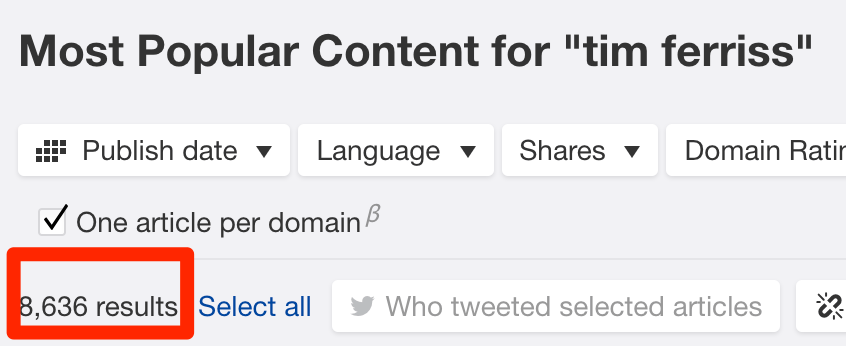
 Use your own criteria to determine who would fit in your list, and then add them in.
Looking for Twitter influencers? You can do it in Content Explorer too.
Enter a topic into Content Explorer, and play around with the different filters to get a list of the most popular articles in your niche. For example, we can add a Domain Rating (DR) filter and a Referring domains filter to get only pages that are linked to often.
Use your own criteria to determine who would fit in your list, and then add them in.
Looking for Twitter influencers? You can do it in Content Explorer too.
Enter a topic into Content Explorer, and play around with the different filters to get a list of the most popular articles in your niche. For example, we can add a Domain Rating (DR) filter and a Referring domains filter to get only pages that are linked to often.
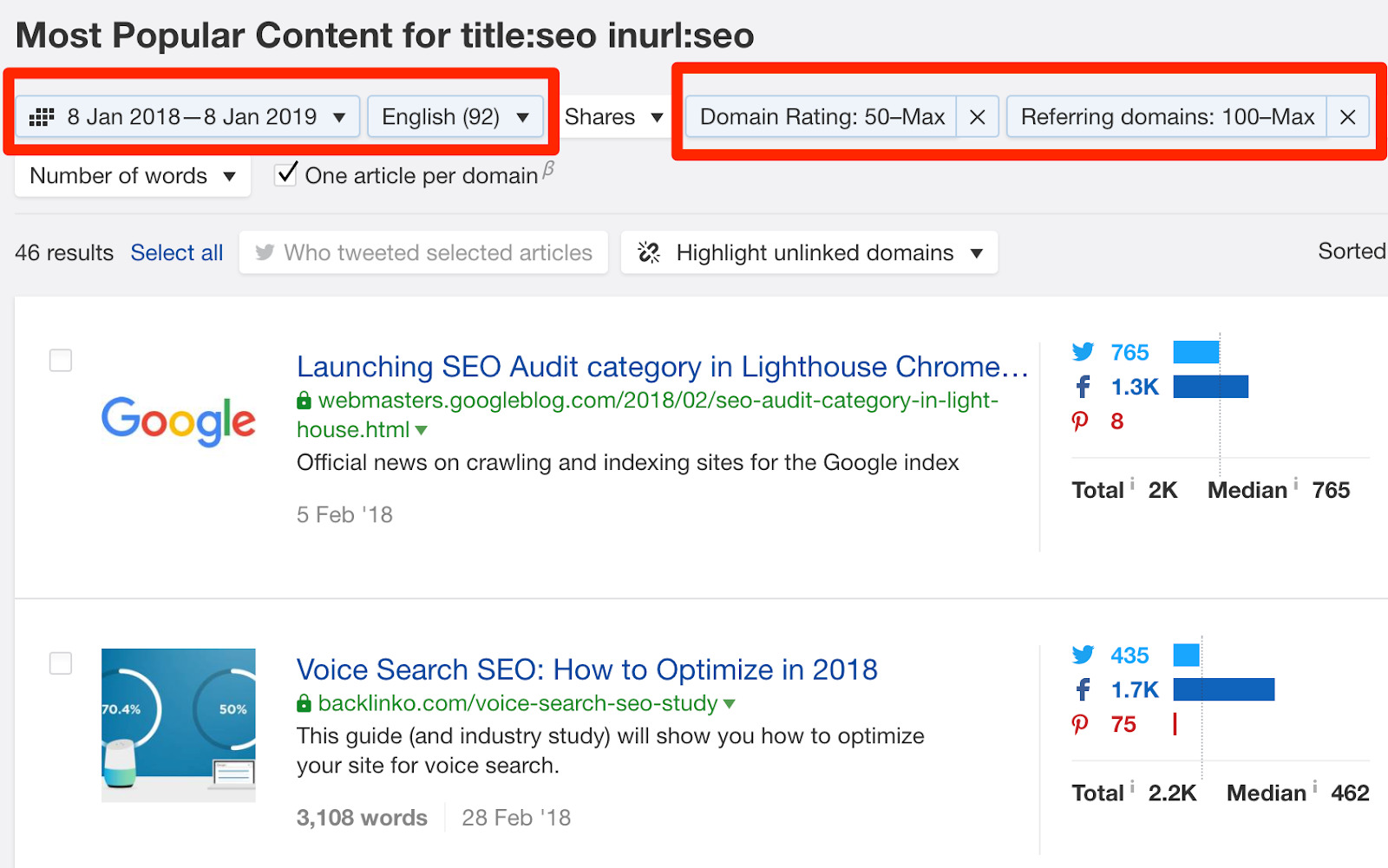
 Select all of these articles, and click on “Who tweeted selected articles.” This will show all the Twitter users who’ve tweeted about these popular articles.
Select all of these articles, and click on “Who tweeted selected articles.” This will show all the Twitter users who’ve tweeted about these popular articles.
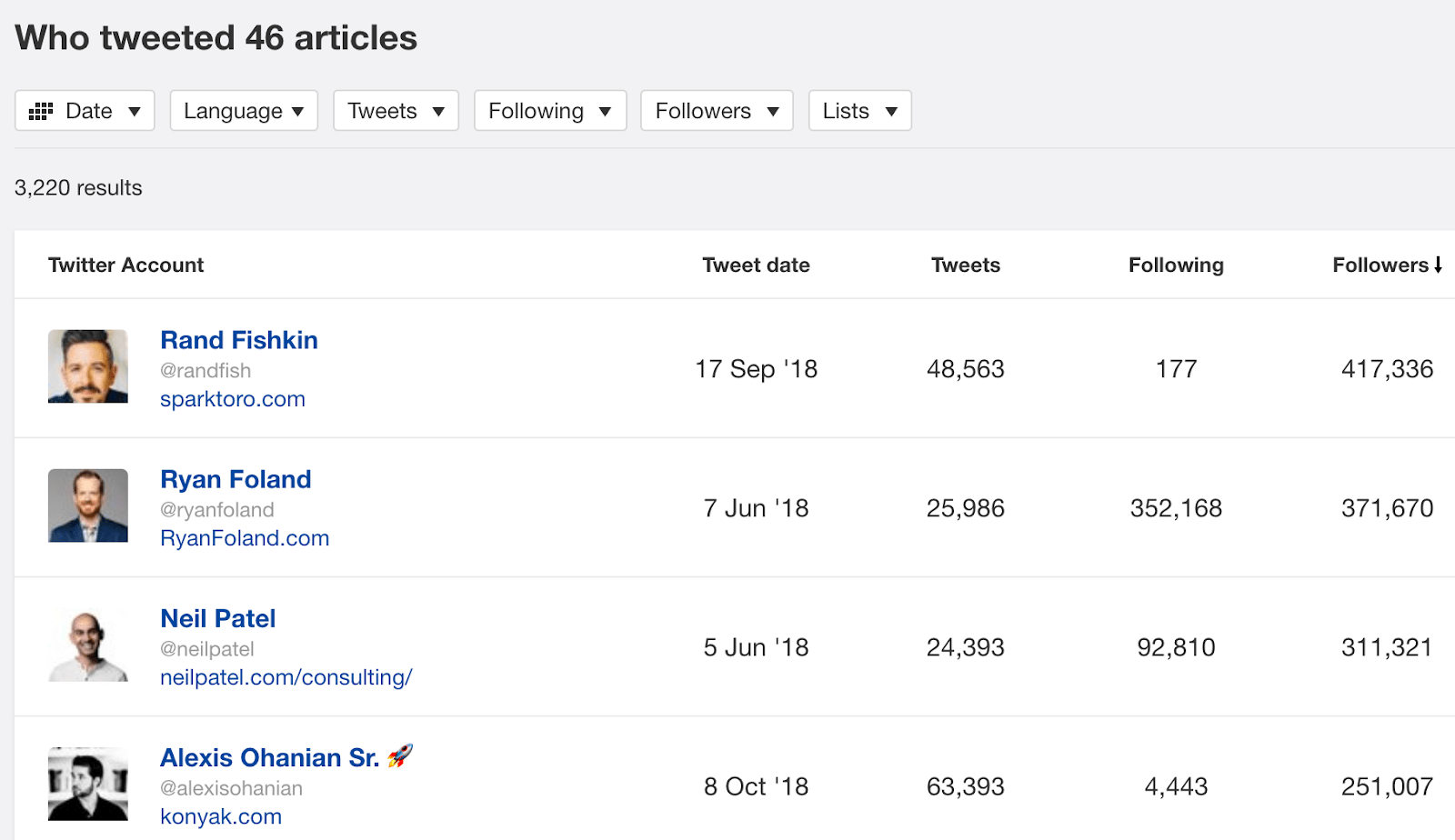
 They’re sorted by the number of followers, so make your way down the list and see if any of them fit your criteria!
They’re sorted by the number of followers, so make your way down the list and see if any of them fit your criteria!
c) Platforms and Marketplaces
Because influencer marketing is such a huge and booming industry, plenty of related platforms and marketplaces have surfaced. These marketplaces aim to be the middlemen and connect these two groups of people. Even YouTube has a marketplace for influencers!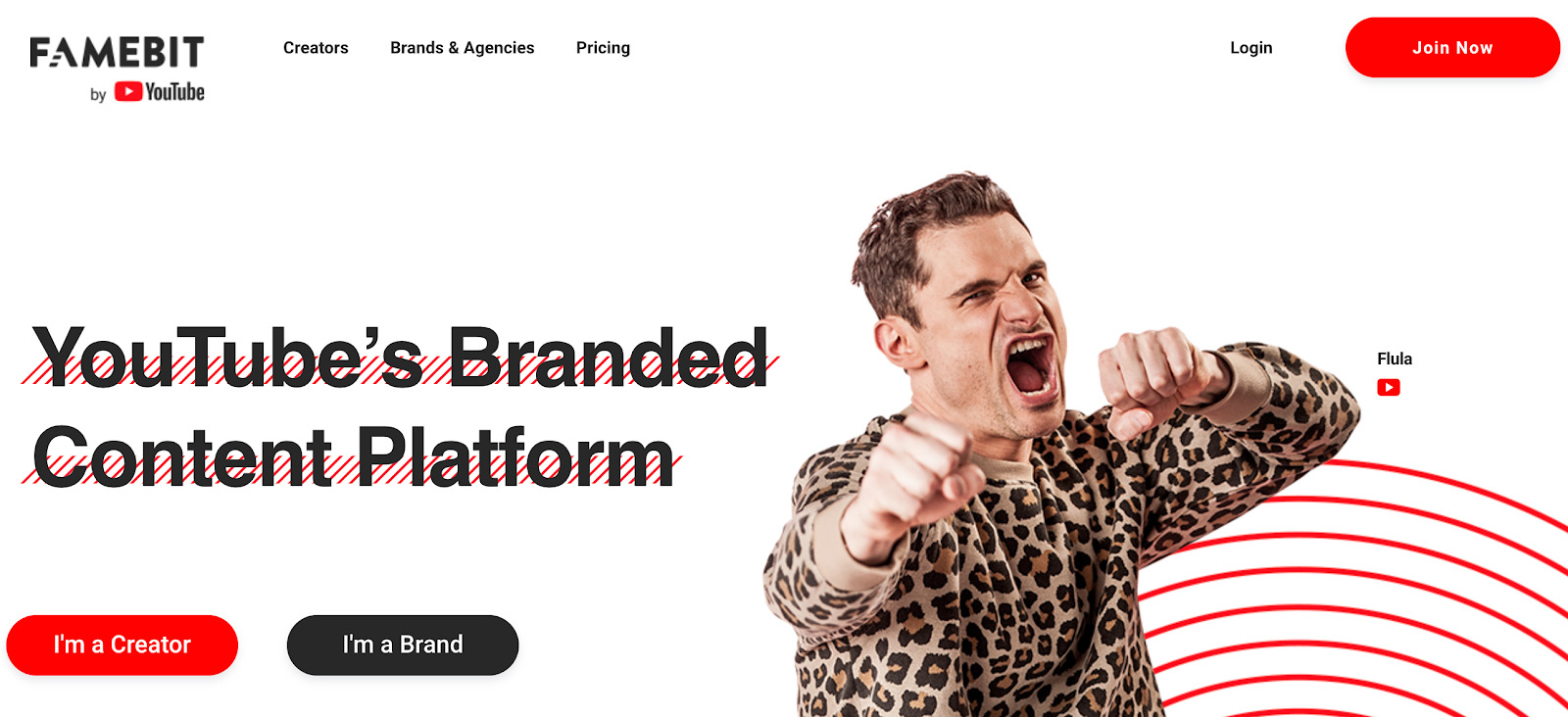
 You can easily find such places by doing a Google search. To get you started, here are a few we’ve found:
You can easily find such places by doing a Google search. To get you started, here are a few we’ve found:
d) Conference/Online summits
In some industries, like business and marketing, many influencers are also speakers on the conference circuit. Some of them also make regular appearances on webinars and online summits. For example, I recently presented at the Digital Marketing Summit Asia, an online summit:
 How do you find these summits? Here’s one way.
Start by identifying a popular influencer who appears regularly in conferences. Take one of their images, right‐click and “Search Google for Image”. For example, in our industry, Larry Kim is a popular speaker:
How do you find these summits? Here’s one way.
Start by identifying a popular influencer who appears regularly in conferences. Take one of their images, right‐click and “Search Google for Image”. For example, in our industry, Larry Kim is a popular speaker:
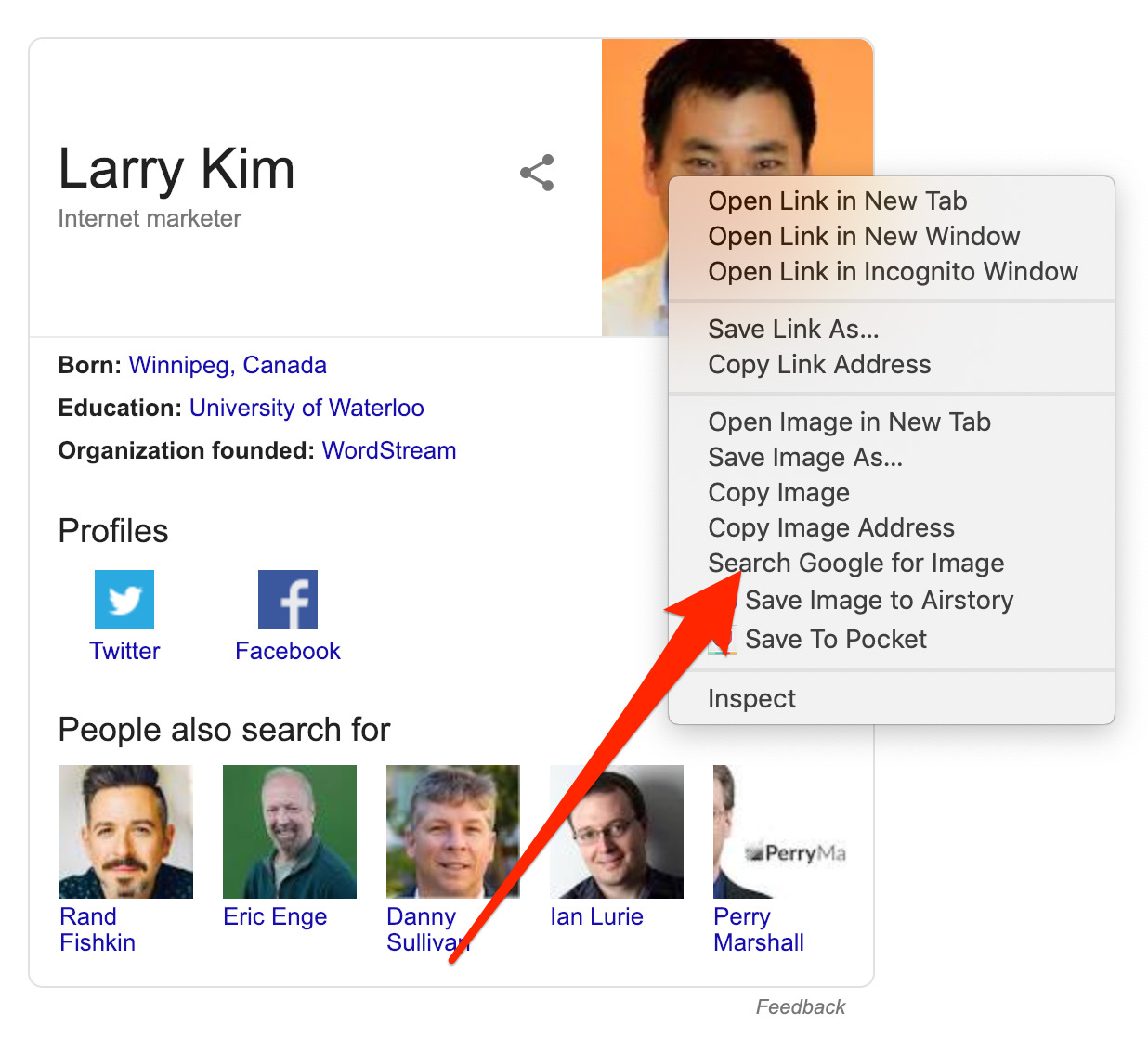
 Then, in the search box, add the search query “conferences,” and you’ll see all the conferences he’s speaking at.
Then, in the search box, add the search query “conferences,” and you’ll see all the conferences he’s speaking at.
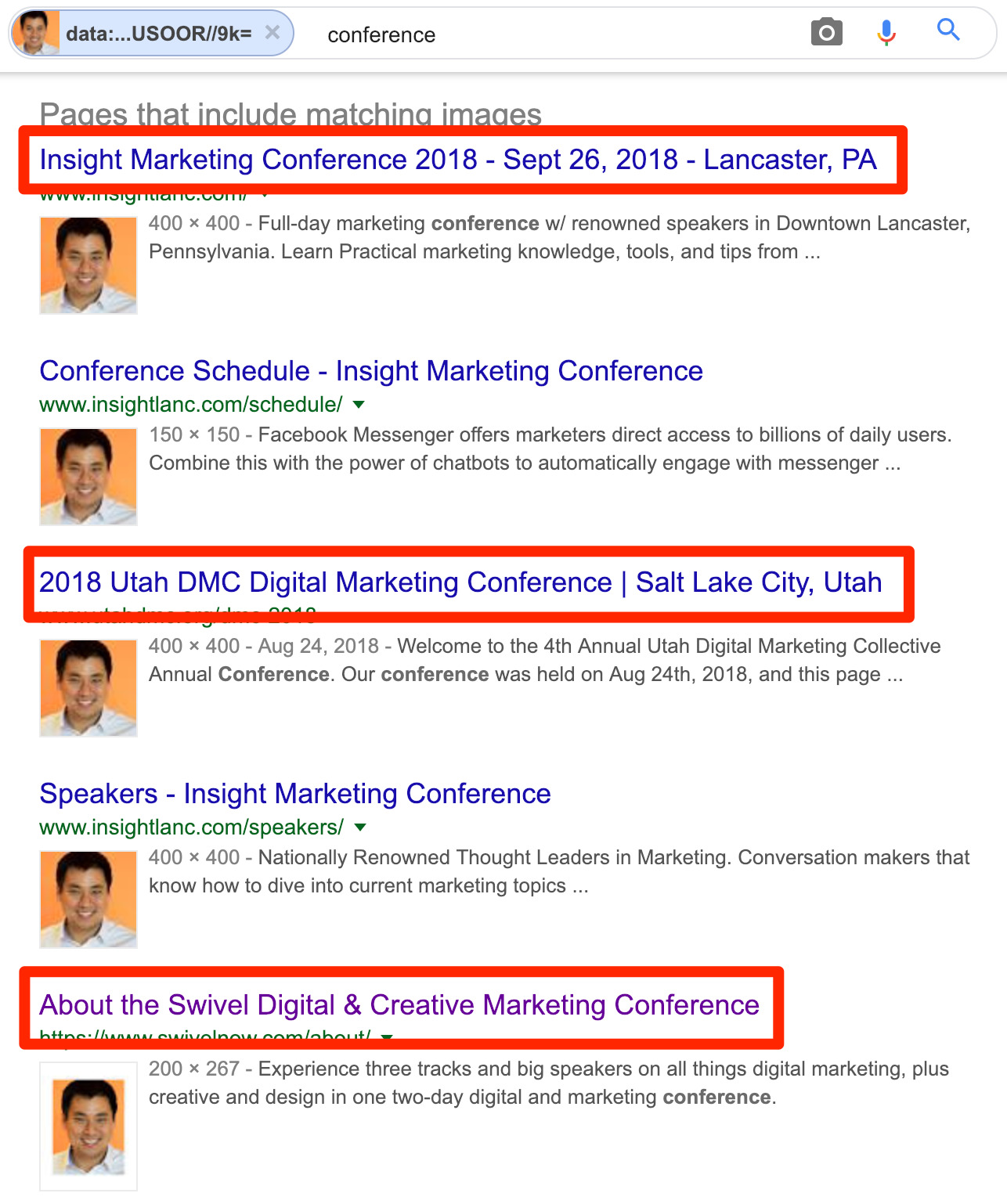
 Click through to these conferences and check out the speaker list! Find those that fit what you want, and add them to your Dream 100.
Click through to these conferences and check out the speaker list! Find those that fit what you want, and add them to your Dream 100.
4. Build genuine relationships with them
Organic influencer marketing isn’t advertising. Don’t treat it as much. To get it to work, you have to play the long game. You have to think long‐term. Focus on building a genuine relationship with the influencers you’ve identified. Get them to like and trust you. You have to give, give, give before asking for anything in return. Here are some ways you can give value to them:a) Engage with their content
Influencers are content creators. Content creators want engagement. They want their blog posts read, their podcasts listened to, and their videos watched. Help them out! Follow them on social media, subscribe to their newsletters and consume their content. Whenever possible, leave a helpful comment. Tell them what you liked about it and why. If you have a valuable opinion that can help supplement the discussion, add to it. Here’s an example of how Ryan Stewart did it: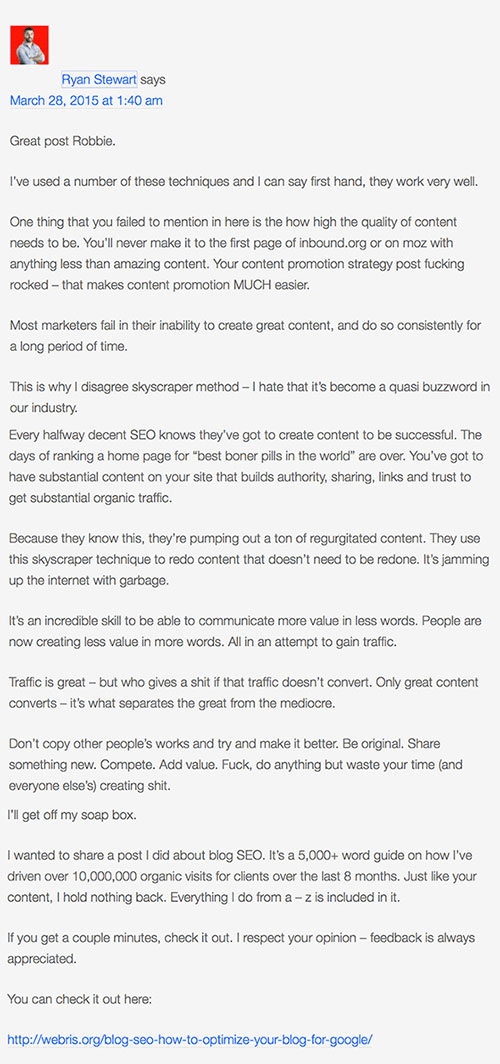

Ryan Stewart’s comment on Robbie Richards’ blog
b) Add value
Engaging with their content is only the first step. If you want them to notice you, you have to go above and beyond. You have to add value to their lives. One good way (if you’re starting out) is to find out what their latest projects are, then offer to help them improve whatever they already have for free. This is how Charlie Hoehn managed to get hired by Tim Ferriss as his “Director of Other.” Charlie reached out to Tim suggesting improvements for his blog and business, and Tim was impressed. It’s also how our very own Joshua Hardwick built a “friendship” with top SEO influencer, Glen Allsopp. Here’s what he said:Helping influencers out with their latest projects isn’t the only way to go. If you own a marketing channel, like a blog or a podcast, leverage your platform. Interview them and help to tell their story. They’ll appreciate the extra exposure for their brand. Furthermore, if you know someone else who can help them out, introduce them to one another. That’s networking 101. Become the super‐connector: connect different people (including influencers).I don’t think I’ve ever really asked Glen for anything. Yet, I think that he’s linked to The SEO Project (my blog) at least once, and he continues to ask for my thoughts on things from time to time. For example, he mentioned me in his recent Hoth review article. I think our relationship started when I helped him out with scraping a website (he didn’t ask — I just did it). I’m sure Glen can correct me in the comments if I’m wrong.
c) Work together in a mutually beneficial partnership
As you start to become friends with an influencer, you can take the relationship to the next level by collaborating on something mutually beneficial. For example, you can create content together or for each other’s platforms. Guest blogging, guest videos, and creating a joint webinar are also great ways to begin working with one another. Here’s an example. Back in September 2018, we did a joint webinar with Buffer.5. Measure the ROI
The big question behind any influencer marketing campaign is always: “how do we know if it is successful?” It’s true: ROI is always tricky to measure and track. One way you can do so is by providing influencers with a coupon code in their name (e.g., quote “bufferlovesahrefs” at the checkout) so you can track the number of sales that came in through their campaign. Alternatively, you could also measure the amount of referral traffic coming in from their website via Google Analytics. But here at Ahrefs, we believe that the real ROI of influencer marketing lies not in the numbers, but rather the lasting psychological effect. Think about it. Humans are social animals by nature. We are wired to form tribes of people who share similar values and interests. We want to belong. Social media is merely an extension of that basic human desire. When we follow an influencer, we are implicitly joining a group of like‐minded people with similar interests and aspirations. Every time we purchase a product recommended by these influencers, we are subconsciously confirming our place in the social group. As a result, we are more willing to listen and consider products endorsed by them. This is the true power of influencer marketing. If you were to simply measure by direct ROI, such as the number of sales generated, you would miss out on capturing the long‐term, lasting effects of organic influencer marketing.Over to you
I hope this article has clearly explained influencer marketing and how it works. There are plenty of ways to work with influencers, from getting them to do an Instagram shoutout to inviting them to visit a pop‐up store (and pranking them!) This is merely a snapshot of how one can begin working with influencers. Have you tried influencer marketing before? How did you work with them? Was it a successful endeavor? I’d love to hear your thoughts in the comments below.https://www.businesscreatorplus.com/influencer-marketing-an-actionable-guide-for-2019/

No comments:
Post a Comment